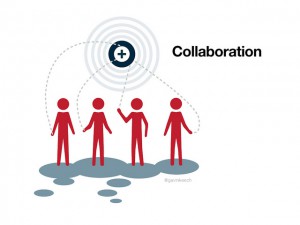 I recently keynoted at the The International Air Cargo Association (TIACA) global conference, which brings together the world’s heavy hitting thought leaders and businesses that help make speedy global commerce a reality.
I recently keynoted at the The International Air Cargo Association (TIACA) global conference, which brings together the world’s heavy hitting thought leaders and businesses that help make speedy global commerce a reality.
The theme of the conference was “Breaking Barriers. Creating Opportunities.” I was asked to keynote this important event because the air cargo industry is facing some wicked problems—such as global security risks and automating draconian paper-based customs processes—and the only way they can achieve success is through cross-industry collaboration efforts where global customs officials, airports, airlines, and freight forwarding/3PL communities come together to agree on solutions that benefit all parties.
At the end of my speech, I asked the audience to list on cards that we had distributed the top “barriers” that were preventing the industry from collaborating.
The top five responses?
– Lack of a shared vision to provide clear understanding of what the future will look like, or a clear definition of the problems that need to be solved
– Short-term self-interest on the part of key stakeholder constituencies, where each look at shifting risk and optimizing for their own “win” in the solution, or pushing risk “to other guy in the supply chain”
– Lack of trust, largely driven by a lack of transparency
– Legacy thinking that promotes inertia, especially when there is no concrete shared vision to provide a common sense of purpose and direction of where to focus efforts
After my keynote I facilitated a working session with a smaller working group of the world’s top executives in the air cargo industry, challenging them to break thes barriers preventing them from truly collaborating by coming up with:
- One action item for each barrier they will do on Monday
- One action item they will work towards implementing over the next quarter
- One action that will promote consistency, leading to a long term change in overcoming the barrier
Strong kudo’s to Doug Brittin (General Secretary for TIACA) and Oliver Evans (Chairman) for challenging these leaders to pause for a couple of days and apply a WIIFWe (What’s in it for We) mindset to get them taking steps towards better collaboration.
I’ll work with TIACA to share the results of the working group so they can begin to take steps to become better collaborators.
Actually, I think they are well on their way to serious consideration of collaboration—and buy-in. Why? On the cover of the latest issue of the TIACA Times there’s “A Call for Collaboration.”
Image: Collaboration by Vanessa Miemis via Flicker CC